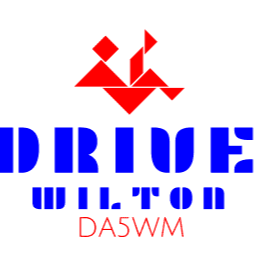History of Dancefloor Music in the Gay Club Scene

Take a dive into the world of dancefloor music in the gay club scene. From its origins to its impact on LGBTQ+ culture and its future, explore the history of this vibrant and important movement. Join us and let's dance!
Disco Music
Disco music emerged in the early 1970s, with the New York City club scene at the forefront. The fusion of funk, soul and Latin rhythms, and the introduction of electronic instruments, led to the creation of high-energy dance music with a four-on-the-floor beat.
House Music
As disco declined in the late 1970s, House music was born in the gay clubs of Chicago, with DJs mixing and re-mixing disco classics and using drum machines to add new beats. House music became more diverse as it spread to New York and Europe in the 1980s.
Techno and Trance Music
In the 1990s, techno and trance music became popular in the gay club scene, especially in Europe. DJs used computers and other digital technology to manipulate and mix different sounds and beats, leading to the creation of new sub-genres and a broader range of dance music.
Pop Music
Pop music has been a staple in the gay club scene since its beginning. Artists like Madonna, Kylie Minogue, and Lady Gaga have consistently been popular in LGBTQ+ spaces.
Drag Queens
Drag queens are also a staple in the gay club scene, blending music and performance art. RuPaul, the most famous drag queen of all time, has released many dance hits and has had a huge impact on LGBTQ+ culture.
Crossover Artists
Crossover artists like Todrick Hall and Billy Porter have become popular in the LGBTQ+ community, bringing their unique blend of theatricality and dance to the dancefloor.
Fast Beats
Experience the electrifying pulse of dance music in gay clubs that will get your body moving like never before.
Repetitive Phrases
Get ready to be blown away by the power of dance music in gay clubs, with simple hooks and lyrics that pack a punch.
Instrumental Breakdowns
A staple of dance music since the disco era, instrumental breakdowns give dancers a chance to catch their breath before going all out.
Electronic Sounds
From the beginning, the use of electronic instruments and sounds has been a hallmark of dance music in gay clubs.
Queer Music
As LGBTQ+ artists became more visible, their music began to reflect their experiences, giving rise to sub-genres like queer pop and queercore.
Global Music
The internet has made it easier than ever for people around the world to access different music scenes. Dance music in gay clubs now often reflects this global reach, incorporating different sounds, cultures, and languages.
Political Music
Many dance tracks in the gay club scene now address political issues like social justice and LGBTQ+ rights, adding depth and meaning to the music.
Pride Parades
Dance music has played a crucial role in the creation and celebration of Gay Pride Parades around the world. Floats and marchers alike often blast their dance music as they dance through the streets.
Ballroom Culture
Dance music has been central to the development of Ballroom Culture, an important queer subculture that originated in New York City in the 1920s. It was popularized in the 80s and 90s with the documentary "Paris is Burning," and more recently, by shows like RuPaul's Drag Race.
Nightlife and Socializing
For many LGBTQ+ people, dance music and gay clubs offer a safe space to socialize, dance and let loose without fear of judgment or harassment. It has become an essential part of queer culture, promoting self-expression, connection, and joy.
Community Building
Gay clubs and LGBTQ+ spaces have been important in creating networks of support and community for marginalized communities. Dancefloor music has played a crucial role in fostering that sense of community and belonging.
Cultural Phenomenon
Gay club and dance culture has become a significant part of mainstream music and popular culture in recent years. Largely thanks to its queer origins and inclusivity, it has broadened its reach and become a more diverse and inclusive phenomenon.
Social Change
Dance music and the dancefloor has often been the site of political resistance, protest, and social change. From the Stonewall riots to the fight for marriage equality, dance culture has been central to many LGBTQ+ struggles for equal rights and justice.
New Sounds, New Influences
The future of dancefloor music in LGBTQ+ spaces is likely to be influenced even more by globalization and the increasing visibility of LGBTQ+ communities worldwide. Expect more diverse sounds, sub-genres, and musical influences.
New Spaces and Social Nightlife
The pandemic has made it hard for gay clubs and dancefloors to stay open and maintain their audiences. However, expect dance culture to continue to thrive as new social and party spaces exclusive to the LGBTQ+ community emerge, both online and in person.
New Challenges and New Struggles
The fight for LGBTQ+ rights and inclusion is far from over. dance music and the LGBTQ+ dancefloor scene is likely to be at the forefront of any future battles for social justice and equality.
Calling all Dj's
If you would like to be featured on our show, please sign up!

